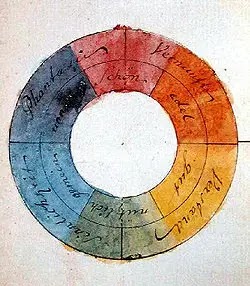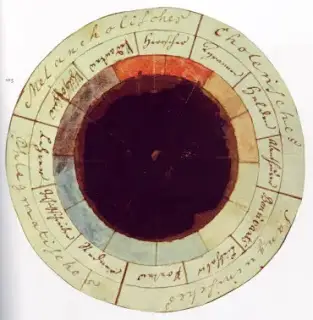It’s no secret that colors make our world a whole lot more beautiful. It’s hard to imagine a world without colors as it makes things more attractive. It won’t be wrong to say that the most essential aspect of any design is color. However, color isn’t just used to make things look pretty rather certain colors symbolize different meanings.
Color symbolism refers to the use of color to represent something. This can be an idea, meaning or a feeling. You might have heard the phrases “seeing red” or “becoming green with envy” but where did they originate from and why do we associate colors with these feelings? Have you ever wondered why a stop sign is red or a green light means go? Well, what else would they be?
Colors have been used as symbols to represent different ideas for thousands of years. In this article, we will discuss the history of color symbolism to understand it better and go through some common color symbols and their meanings. Finally, I’ll explain how to apply the knowledge of color symbolism to your designs, business, and marketing. This will help you better communicate your message and have a powerful impact on your audience.
If you are interested, you should also take a look at my Complete Guide to Color Theory for an in-depth guide to colors and the color wheel.
What Is Color Symbolism?
Color symbolism is the practice of using color to represent an idea, message, or emotion. Color symbolism shouldn’t be confused with color psychology – the use of colors to have an influence on a viewer’s perception.
Humans have been exposed to colors for millions of years. This has resulted in a biological conditioning of the mind to associate colors with certain objects or emotions. For example, why do people associate the phrase, “seeing red” to anger? This is because the color red is associated with blood, which is also red. When we are angry our blood rises and we reach a heightened state of emotion making us see red.
But, there is no hard rule when it comes to using color symbols and the meanings of color may vary. This is due to many factors such as culture, religion, or perception. Colors might also symbolize something different overtime. In the past, the color blue used to be a feminine color but as time went on blue is a universal color.
What Do Colors Symbolize?
Color symbolism has a great history and rose due to people’s understanding and perception of color. Many colors symbolize a general feeling or idea that majority people share. However, these symbols tend to be culture-bound and different among individuals. But still, it can help your brand or design a whole bunch if you could understand what colors symbolize.
Here are some of the most common colors that are usually used as a symbol and what they symbolize.
Red
The color red symbolizes anger, passion, lust and love. Red is also used to signal danger or a warning. In branding, red is commonly used to invoke feelings of excitement and passion in consumers. Here’s a list of all the things red symbolizes:
- Excitement
- Passion
- Lust
- Love
- Danger
- Fire
- Blood
- Aggression
- Power
- Intensity
When using red be sure to take the cultural context in mind. In countries like China, the color red symbolizes good luck and in Japan it is the color of happiness.
McDonalds, In-N-Out burger and KFC have the color red in their logo. Research suggests that the color red tends to attract impulsive buyers by stimulating their appetite. Development in color psychology also suggested that the color red can increase blood pressure, metabolism and respiration rate.
The Ketchup and Mustard Theory

Many fast food brands are colored with red and yellow to make consumers feel hungrier. These colors combined together have proven to increase people’s appetite so they would feel hungrier and eat more. This use of color has been termed the Ketchup and Mustard theory
How to use red:
Red is a strong color so it is best used if you want some element of your design to stand out. In web design, important buttons or call to actions can be colored red to draw attention to them. If you are designing for a fast-food chain; take note of the ketchup and mustard theory above. The color red can improve the response from your consumers. Red also symbolizes high energy so anything that suggests intensity or energy can be colored red for added effect.
Blue
The color blue symbolizes calmness, trust and intelligence. This association comes from the color of water and the bright blue skies. Open blue skies and the tranquility of the vast ocean have a soothing effect on people. Blue is also a cool color due to it being associated with cooler landscapes such as an overcast day.
The color blue might act as a symbol for many other effects:
- Peace
- Tranquility
- Cold
- Calm
- Stability
- Harmony
- Unity
- Trust
- Truth
- Confidence
- Water
- Security
- Sky
The color blue is also the favorite among both men and women making it a universal color. Unless you’re going for something specific or trying to have a loud voice for your brand – you really can’t go wrong with blue.
How to Use Blue:
Blue works well for professional brands as it suggests intelligence. IT companies such as HP, Dell, and IBM use blue in their logo to suggest trust and professionalism. This is in line with their brand image as people rely on IT companies for a lot of technical needs. Trust, intelligence, and confidence are exactly the kind of traits consumers would expect from such companies.
Blue is also a universal color and apparently appeals to both genders. If you are designing for a unisex fashion brand it might be appropriate to use the color blue.
Green
Green symbolizes envy, money, nature and growth. The color green is everywhere in nature – grass, trees, leaves etc. Darker shades of green can be linked with money and thus greed and envy. An excess of wealth may follow greediness which is why it is indirectly associated with the color green.
Green can also symbolize things like:
- Harmony
- Stability
- Inexperience
- Youth
- Health
- Good luck
- Generosity
The cultural context for green doesn’t matter much. Stereotypically, green has been seen as a color of good luck due to it being associated with the 4-leaf clover.
How to Use Green:
The strong impact of green on nature makes it the primary choice for organic products. Companies that are eco-friendly “go green” as it symbolizes natural, organic, and sustainable production. Improvement or a positive change is also symbolized by green. When stocks go up in the stock market, the price change is indicated by a green arrow. Inversely, the color red is shown when it goes down.
Yellow
The color yellow is used to symbolize happiness, hope and youth. Yellow is associated with hope due to the sun. After every night, the bright sun rises to indicate that there is always hope for a new day after every dark night. Yellow is also a warm color due to it being associated with a bright sunny day.
Yellow is also symbolized as:
- Cowardice
- Illness
- Friendship
- Sunshine
- Imagination
- Hazard
Yellow sometimes represents illnesses. Infectious mosquito bites have been said to cause “yellow fever”. The term was coined when it was noted that the skin turns a yellow color due to jaundice.
How to Use Yellow:
If you have a youthful or joyous brand yellow can be a good choice. Yellow is the brightest color on the spectrum and can put off the user if used too much. Brighter shades of yellow can also cause irritation in the eyes when exposed for a long time. If you manage to use just the right amount of yellow it can have a great impact on your audience. It is best used for showcasing products that are accessible or have some positive influence on the users.
Pink
The color pink symbolizes love, compassion, softness, and femininity. Although it was recognized as a masculine color around the 20th century many have argued that pink has always been a feminine color. Pink also symbolizes:
- Cuteness
- Playfulness
- Romance
- Sensitivity
- Sweetness
- Tenderness
A simple way to look at it is to know that the color pink is usually associated with traditional feminine qualities.
How to Use Pink:
Brands that use the color pink usually target a female audience. Since pink is known as a girly color it does the job well of targeting female consumers. Pink is also used by brands for valentine’s day offers and promotions. Since pink is closely related to love and compassion it is also used for attracting couples. Brands that have products for mothers tend to use the color pink with a mix of baby blue to give the effect of love, compassion and tenderness.
Some brands such as Baskin Robbins use pink in their logo to symbolize sweetness for their ice cream flavours. Since pink is a very rare color to see in logo design, some brands might use it to stand out from the crowd. T-mobile is a good example of this as it uses pink in its design which makes them unique but also gives off a sense of playfulness.
Purple
Purple has always been used to symbolize royalty and independence. Prominent figures in history would wear purple robes because of their royal status. This was because purple was the most expensive color to dye clothing which made it a garment of royalty. Purple is also associated with mystery and magic. You might have seen magicians wearing purple colored vests or hats. Purple can symbolize curiosity or creativity due to its close relation with mystery as well.
The shades of purple also make a huge difference in how it’s perceived. A lighter shade has a softer effect and is more suitable for feminine brands. However, darker shades of purple can symbolize frustration as it starts to mix a bit with blue. You might have noticed in cartoons that when a character is frustrated his face becomes a purple shade.
How to Use Purple:
If you want to give your brand a royal touch purple would definitely make it stand out. To make the product have a better perception of luxury combining purple with golden would do the trick. It is also used for Halloween or horror themes as it gives a sense of mystery. If you are targeting a feminine audience then combining purple with pink can really add emphasis to your products.
White
White symbolizes simplicity, purity and cleanliness. In Western countries, white is worn by brides on their wedding day to suggest sexual purity (virginity). In Eastern countries, white clothes are worn for mourning. When used for designing, white is a clean, modern color and suggests simplicity and minimalism.
White also symbolizes:
- Birth
- Peace
- Humility
- Winter and snow
- Innocence
- Marriage in Western cultures
- Grief in Eastern cultures
- Medicine
White can act as a great neutral color and can help make other elements stand out more.
How to Use White:
If you are going for a simple, modern and minimalistic look white might work for you. It’s important to know that adding white to your design might also mean adding white space. Having more white space in your design can suggest a modern product.
Take Apple for example. They are known for their innovation and their branding clearly communicates that. If you see any of Apple’s ads you’ll see they have a white background behind their products and lots of empty space.
White also symbolizes cleanliness which is why you would see many kitchen and bathroom products colored white.
Black
The color black symbolizes death, evil, power and luxury. Black is worn at funerals in the west, villains usually wear a black cloak, and a black suit represents elegance and power. Luxury is also represented by black. According to Hubspot, only 1% of people would consider a black product as cheap.
Black has great historical significance and also symbolizes:
- Sophistication
- Mourning
- Detachment
- Anger
- Emptiness
- Unhappiness
- Style
- Professionalism
- Depth or mystery
Newspapers have been black-and-white due to printing presses and it is also the cheapest color to print. Luxury brands such as Luis Vuitton and Chanel have a black colored logo to seem exclusive. This helps them ensure that they target only higher class audiences for their products.
How to Use Black:
Being the most common color in graphic design, you are almost always going to be using black when designing. If you want your brand to convey a sense of luxury; using black with a touch of white or gold can go a long way. Black also symbolizes evil and power so if you are designing a poster to raise awareness on a social issue you might consider using black. Since some issues can be dark in nature, black seems like an appropriate color.
Color Symbolism around the World
Different colors symbolize different things but the context matters a lot when it comes to color symbolism. If you are using colors in a project it is important to keep in mind the context of the colors you use. If you don’t consider the context you might risk having your message misunderstood or worse, offend your audience.
Color Symbolism and Culture
The most significant impact of color symbolism is due to cultural contexts. Ancient Greek philosophers and theorists have been suggesting that certain colors have meanings attached to them. Although this holds true to quite an extent it’s important to know that the meaning of colors might vary in different cultures.
For example, mourning, grief and death is symbolized by white in East Asia but black in the U.S. Happiness is symbolized by yellow in China but white in Australia and NZ.

It is important to know the cultural differences when it comes to color symbolism. These differences can confuse brands to use the wrong colors for their message – which may lead to lesser viewers.
Color Symbolism and Psychology
Colors makes us feel a certain mood, vibe or emotion proving it has psychological effects on people. Carl Jung, a well-known psychiatrist and psychoanalyst, was one of the people to explore the effects colors had on human behavior.
Colors express the main psycic functions of man
Carl Jung
Color influences how we see things. For example, if you see a dish made of chicken dipped in red sauce with yellow flakes on it you might assume that it’s spicy. However, it might be that the dish actually tastes sweet. When it comes to food, we associate the color red with spicy because red is also the color of chili and spices.
Color Symbolism and Religion
Religion has had a great impact on color symbolism as different religious values are represented by colors. The color green has significance in Islam and considered its traditional color. The color of the Saudi Arabian flag is green and many Islamic countries such as Pakistan, Iran, Iraq and Afghanistan follow. In the Quran, the holy book of Islam, it is mentioned that the people of paradise will be wearing clothes made of fine green silk.

In Hinduism, the color saffron has utmost importance. Saffron is a yellowish-orange color and it symbolizes the fire that burns impurities of the soul. Other important colors such as, yellow and green symbolize knowledge and happiness respectively. The color blue is associated with the Hindu God, Lord Krishna (meaning: dark as a cloud) whose skin color is blue. Blue symbolizes bravery or infinity as in the vastness of the ocean.
In Buddhism, the color orange is considered sacred and is worn by Buddhist monks. Interestingly, the Buddhist monks started wearing the orange robe as a tradition. It was the cheapest dye and symbolizes ‘simplicity and detachment of materialism’.

In Christianity, the color white symbolizes purity and black symbolizes sin. Christian popes wear white robes to show purity. And a heart full of sins is usually considered a “black” heart according to many religions. In Christian art, the color Blue primarily represents hope. This might be because of the blue skies and how they show endless possibilities. The color gold also holds significance in Christianity as Paradise is said to have a lot of gold. Bishops wear a purple robe as a symbol of royalty as purple dye was the most expensive to make. To learn more about the use of colors in Christianity you can look at Google’s article on Colors in Christianity.

Color Symbolism and Literature
Writers and poets have been using colors as symbols to describe situations and emotions in their work. Colors are used in literature to help the reader imagine the scene they are describing. By using symbolic colors writers can give a clear picture of what they are talking about to the reader.
Take the color red for example. Other than saying, “he was angry” the writer may say “he was red”. However, the context in this case is important. When the color red is being used to describe the color of the skin then it can express two different emotions. When we are angry we turn red but, we also turn red when we are embarrassed. In this case, the writer either clarifies the context or uses a common phrase.
When the man saw his wife he turned red
This could mean two things. Either the man was angry with his wife or he was embarrassed when he saw his wife. If the writer wants to clarify that the man was angry he may write:
Startled after walking into the room, He saw his computer on the floor, shattered to pieces. Suddenly he heard a creek from the door behind him and the silhouette of a woman stood out. Suspecting that His wife was responsible for the broken computer; He saw his wife and turned red.
Jacob Olsen has also covered the use of color symbolism in literature in detail.
Why Is Color Symbolism Important?
It is important to know what colors symbolize to use them correctly in your branding and designs. If you don’t understand what certain colors may mean to your audience you risk miscommunicating your message or offending them.
It Helps the Audience Understand What You Want to Say
When using colors in your design you need to make sure the audience understands your main message. However, if you use the incorrect colors your viewers would be left confused or offended. For example, bright colors such as, pink or orange tend to attract teenagers and millennials. However, adults may be more attracted towards “mature” colors such as, beige or navy blue. This is also why you would see office buildings colored plain colors. It gives a more formal and professional vibe than coloring it something like pink or yellow.
The car manufacturer, Volkswagen ran a commercial in Italy with a black sheep in the middle of a larger flock symbolizing those who owned a VW Golf as someone unique and self-assured among a crowd of others who were not. In several cultures around the world, black sheep represents an outcast and is seen as something undesirable. In Italy, a black sheep represents confidence and independence.

If the ad were targeted to non-Italian audiences the marketing of the VW Golf could have gone drastically wrong.
It Has a Stronger Impact on Viewers
Understanding color symbolism will give you valuable insight into what your audience is like. Since people associate colors with certain ideas and things they would instantly be drawn into your design. If you are designing a flyer for a Muslim audience using the color green would capture their attention as they would instantly associate it with their religion. Also, since people take their faith seriously they might be much more strongly influenced to look at the design.
It Helps Create Diversity
Many big brands branch out to target different audiences. They do this by spreading awareness of social groups. Brands might target black communities, LGBTQ+ and religious groups in order to have a diverse audience. They do this by spreading awareness on social issues and represent these communities in a good light. Proper color selection is necessary in these kinds of campaigns. Certain colors can act as symbols to represent these groups. By using the correct colors you ensure your message would get across the right people.
Which Colors Do I Use as Symbols?
Despite the spread of color symbolism and knowing so much about it; designers still have a lot of confusions. When sitting down to decide on which colors to use designers get stumped. They might think what color symbolizes strength or curiosity or freedom? Etc.
This happens because you might come across a lot of different businesses in your career. You need to have the right skills and knowledge so you can cater to each brand individually. Since every brand is different, their needs will be too so if one color works for a company it might not work for another.
There is a way to judge which color should be used for the brand image you’re trying to go. Color symbolism is basically the way people associate colors with certain ideas and things. So, when you are using color for your brand just think what your brand is associated with.
Let’s say you are designing a poster for a debate contest at your local school. Now over here, there isn’t a color that symbolizes debating. But, debating can be associated with freedom of speech and the color blue is associated with freedom. Blue symbolizes freedom as it is associated with the vast sky that indicates limitless possibilities. That is also where the saying, “the sky is the limit” comes from.
See how we took debate and linked it with blue? When designing, you could think this way to choose your colors. However, you should try not to overcomplicate things; only use color as a symbol where you think it would have an impact on your audience. Also, you should keep the brand’s own colors in mind. You would often be put into a situation to incorporate the brand’s primary colors in your designs. So make sure not to force the use of some colors.
History of Color Symbolism
Knowing when and how color symbolism began can help us understand how color perception evolves with time. People didn’t always associate the color yellow with cowardice rather it was the color of bravery. Now, the color blue symbolizes bravery. Learning the history behind these colors tells us why we use them as symbols.
Now, there isn’t an exact date color symbolism began as humans have been subconsciously associating colors with things for centuries. However, it can be said that religious groups were the first one to use colors to symbolize religious values.
In 322 BCE, Aristotle, a Greek philosopher and polymath, proposed that all colors came from God and his heavens. This might have laid the foundation for a general association of colors with religion.
Between the 5th and 17th centuries colors were used to symbolize things mentioned in holy books such as white for purity, black for sins or evil and red for blood. Popes wear white robes and bisons wear purple robes. Jesus Christ was often potrayed with a golden halo etc.
Many theorists, philosophers, and mathematicians challenged Aristotle’s theory of colors originating from the heavens. They did this by discovering other ways colors originated. The theory that stood out the most was of Isaac Newton, who demonstrated that there were 7 primary colors in the spectrum. These colors were red, yellow, orange, blue, green, indigo, and violet.
Moving forward to the 19th century Wolfgang Van Goethe enhanced the original color wheel proposed by Newton. He arranged the colors in a wheel and associated them with certain meanings. These colors went on to become symbols due to the psychological effect they had on people.


Coming back to the modern world, it’s is safe to say that some of these symbols still hold true; especially those that are culture-bound or symbolize religious values. However, since things have advanced rapidly it might be that people would associate different things with colors nowadays. Also, due to an increase in consumer spending many businesses might have an influence over color symbolism. The ketchup and mustard theory stays true to this as red and yellow can be quickly associated with a fast food brand.
At the end of the day, be smart when using colors in your design. Color symbolism can vary across different cultures and is based on personal experiences. Not everyone shares the same brain so it is important to look deeper into the color selections you make and test them with users to see what works and what doesn’t.
Check out my Complete Guide on Color Theory to learn more about this topic.